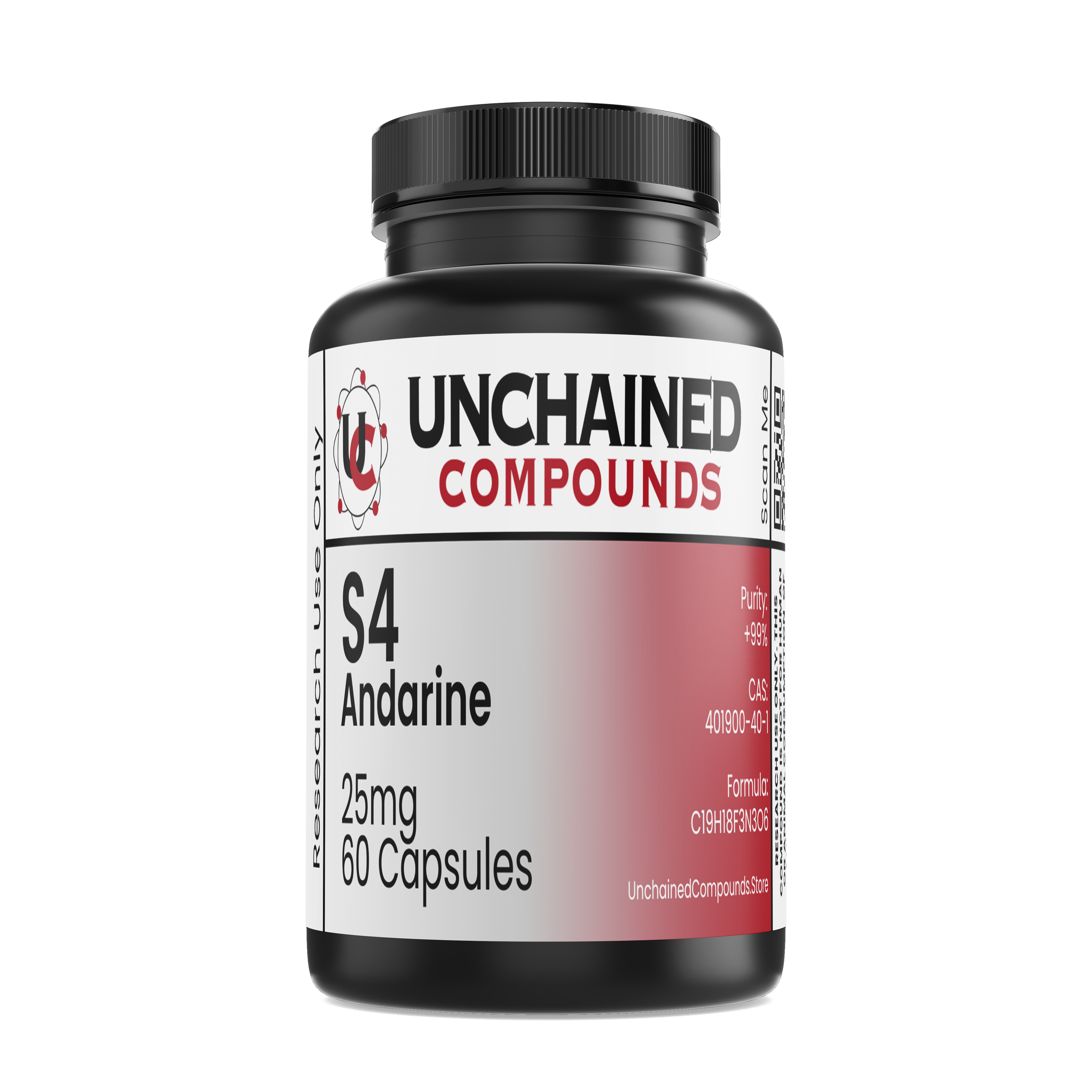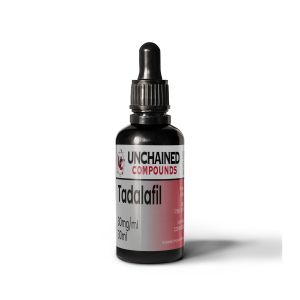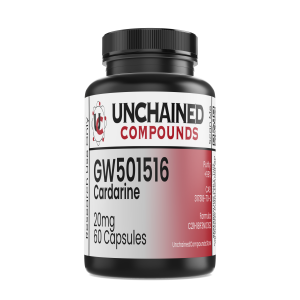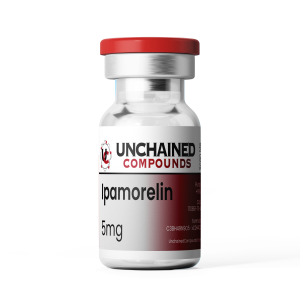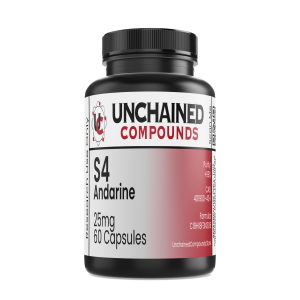Description




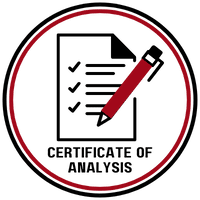

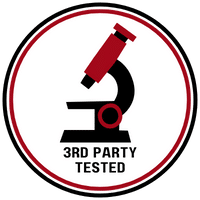
S4 is an investigational selective androgen receptor modulator (SARM) developed for treatment of conditions such as muscle wasting, osteoporosis and benign prostatic hypertrophy (BPH). It is an orally active partial agonist of the androgen receptor (AR). In intact male rats, 0.5 mg andarine daily was shown to reduce prostate weight to 79.4%, and non-significantly increased levator ani muscle weight. This suggests that andarine is able to competitively block binding of dihydrotestosterone to its receptor targets in the prostate gland, but its partial agonist actions at the androgen receptor prevent the side effects.
Specifications
- Chemical Formula: C19H18F3N3O6
- Molecular Mass: 441.363 g/mol
- Synonyms: Andarine
- CAS Number: 401900-40-1
- PubChem: 9824562
- Total Amount of the Active Ingredient: 25mg/caps and 60 capsules
- Shelf Life: 36 months
Minimize open air exposure, store in a cool dry place
Research Studies
Abstract
Selective androgen receptor modulators (SARMs) are potent anabolic agents with tissue-selective properties. Due to their potential misuse in elite sport, the World Anti-Doping Agency (WADA) has prohibited SARMs since 2008, and although no representative drug candidate has yet received full clinical approval, recent findings of SARMs illegally sold via the internet have further supported the need to efficiently test for these compounds in doping controls. In the present communication, the mass spectrometric characterization of urinary metabolites of the SARM Andarine (also referred to as S-4) compared with earlier in vitro and animal studies is reported. Liquid chromatography interfaced to high-resolution/high-accuracy (tandem) mass spectrometry was used to identify phase I and II metabolites, confirming the predicted target analytes for sports drug testing purposes including the glucuronic acid conjugates of the active drug, its monohydroxylated and/or deacetylated product, the hydrolysis product resulting from the removal of the compound’s B-ring, as well as the sulfate of the monohydroxylated and the deacetylated phase I metabolite. The obtained data will support future efforts to effectively screen for and confirm the misuse of the non-approved drug candidate Andarine. Copyright © 2010 John Wiley & Sons, Ltd.
Crystal and molecular structure of ostarine and andarine
Abstract
In recent years, an increasing focus has been given to the study of selective androgen receptor modulators (SARMS) due to the fewer side effects they exhibit compared to anabolic androgenic steroids. The crystal structure of ostarine (Os) and andarine (AND) has been determined by X-ray single crystal diffraction. It was found that ostarine crystallizes in the monoclinic system, P21 space group with Z = 2 and one molecule in the asymmetric unit, while andarine crystallizes in the tetragonal system, P42212 space group with Z = 8 and one molecule per asymmetric unit. A polymorph of ostarine (Os–P1) has been identified as being monoclinic, space group P21, Z = 2 with two molecules in the asymmetric unit and has been solved by X-ray powder diffraction using Parallel tempering Monte Carlo technique and refined by Rietveld method. This polymorph has been obtained by phase change as a result of heating. All studied compounds were further characterized by IR spectroscopy, differential thermal analysis (DTA) and thermogravimetric analysis (TGA). The molecular self-assembly architectures are built by hydrogen bonds as O–H⋯N and N–H⋯O in ostarine, respectively O–H⋯O, N–H⋯O in andarine. Crystal packing energies were calculated using atom-atom force field method (London-Coulomb-Pauli, CLP) which involves the evaluation of Coulombic, polarization, dispersion and repulsion terms. Furthermore, Hirshfeld surface and fingerprint plot analysis was carried out in order to understand the presence of different intermolecular interactions and how hydrogen bonding holds the stability of the crystal structure.
Abstract
Several selective androgen receptor modulators (SARMs) have been synthesized and investigated in humans, rats, and dogs in the past, but no data are yet available concerning the metabolism of SARMs in horses. The aryl-propionamide-derived drug candidates S24 and S4 (andarine) have a strong androgen receptor binding affinity and show distinctive specific cell answers. Although no SARM drug candidate (aiming for testosterone replacement therapy) has completed clinical trials yet, S4 has been illicitly available via the Internet. These facts led to the prohibition of SARMs by the German equestrian federation, and the (mis)use of such compounds would further represent a doping rule violation in horse racing. In this study, the drug candidates S24 and S4 were subjected to in vitro metabolism experiments with equine liver microsomal preparations from a female Quarter Horse to obtain information about potential target analytes in equine doping control analysis. The enzymatically synthesized metabolites were characterized by liquid chromatography–tandem mass spectrometry and –high-resolution/high-accuracy mass spectrometry. All observed S24 and S4 equine metabolites are in agreement with earlier in vitro and in vivo studies in humans and dogs. Nevertheless, the relative percentage of generated equine metabolites (as determined from the analytes’ response in full-scan chromatography–tandem mass spectrometry and –high-resolution/high-accuracy mass spectrometry measurements) differs considerably from the reported profiles. Although the S24 metabolite pattern is comparably balanced concerning glucuronidated and sulfonated conjugates, the major S4 metabolite was found to be the unconjugated dephenylated compound, with a proportion of more than 90%.
Disclaimer
The information provided above is not intended to substitute medical advice, diagnosis, or treatment. Should you have any questions regarding a medical condition, seek the advice of your physician or a qualified healthcare provider. In no case should medical advice be disregarded or delayed because of what you have read or seen. We bear no responsibility or liability for your use of any of our research compounds and products. Please note that they are being sold for research purposes ONLY. We do NOT condone any personal use.
NOTE: In some cases wherein the assigned top colors are out of stock, a different top color will be used to ensure that your order will not be delayed. Should you need assistance identifying the peptide vial that you received, please send us an email at support@unchainedcompounds.store
ALL ARTICLES AND PRODUCT INFORMATION PROVIDED ON THIS WEBSITE ARE FOR INFORMATIONAL AND EDUCATIONAL PURPOSES ONLY.
The products offered on this website are intended for in-vitro studies only. In-vitro studies (Latin: “in glass”) are performed outside the body. These products are not medicines or drugs and have not been approved by the FDA to prevent, treat, or cure any medical condition, ailment, or disease. Bodily introduction of any kind into humans or animals is strictly forbidden by law.


